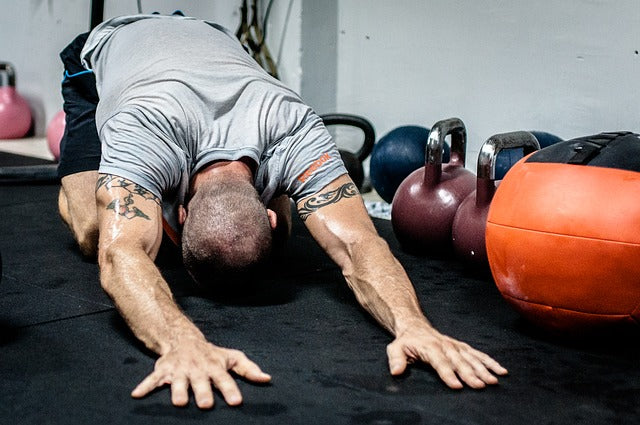
How Anterior Pelvic Tilt Contributes to Male Incontinence — and What You Can Do About It
Share
How Anterior Pelvic Tilt Contributes to Male Incontinence
And How You Can Take Control Through Pelvic Alignment and Strengthening

If you're dealing with frequent leaks, urgency, or bladder control challenges, your posture could be a hidden contributor. One of the most overlooked causes of male urinary incontinence is a postural imbalance called anterior pelvic tilt (APT).
In this article, you'll learn what anterior pelvic tilt is, how it affects the bladder and pelvic floor, and what you can do to restore control and confidence.
What Is Anterior Pelvic Tilt?
Anterior pelvic tilt is a postural condition where the pelvis tilts forward, causing the lower back to arch excessively. This misalignment puts unnecessary pressure on the bladder and weakens the pelvic floor muscles — the group of muscles responsible for supporting bladder function.
Common causes of APT include:
- Sitting for long periods
- Weak gluteal muscles
- Tight hip flexors
- Poor core engagement
How Does Pelvic Tilt Affect Incontinence?
When the pelvis is out of alignment, the pelvic floor muscles often become either too tight or too weak. This imbalance can impair their ability to:
- Support the bladder and urethra
- Respond to increased abdominal pressure (like when you cough or sneeze)
- Control the flow of urine under stress or urgency
In short, anterior pelvic tilt can directly contribute to both urge and stress incontinence in men.
How to Fix Anterior Pelvic Tilt
The good news is that posture can be corrected through targeted movement and strengthening. Here are the three key steps:
- Stretch Tight Hip Flexors: Exercises like lunging hip stretches can release the tension that tilts your pelvis forward.
- Strengthen Core and Glutes: Glute bridges and planks help bring the pelvis back into alignment.
- Practice Pelvic Tilts: Lie on your back and gently rock your pelvis backward to reduce arching in the lower spine.
Activate the Pelvic Floor for Maximum Bladder Support
Once your pelvic alignment improves, you’ll be in a better position to retrain your pelvic floor muscles. These muscles form a sling that supports the bladder and urethra, and strengthening them is one of the most effective ways to reduce urinary leakage.
Make It Easier with the eKegel Device
For men who find it difficult to engage the correct pelvic floor muscles on their own, the eKegel is a simple, hands-free solution.
The eKegel uses gentle electric stimulation (EMS) to automatically contract and strengthen the pelvic floor muscles — even if you don’t know how to do Kegels manually.
Benefits of using the eKegel:
- Improves bladder control by activating deep pelvic muscles
- Trains muscles often weakened by poor posture or surgery
- Supports long-term continence and confidence
- Portable, discreet, and easy to use at home
Conclusion
Anterior pelvic tilt may be an invisible factor in your battle with incontinence. But by improving posture and activating the pelvic floor, you can take back control.
Stretch. Align. Strengthen. And if you need extra support, the eKegel can guide your recovery one contraction at a time.
